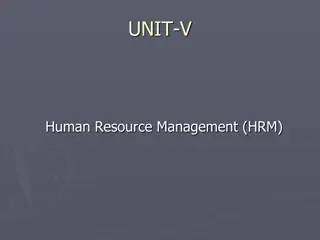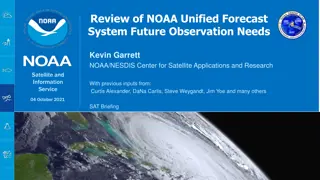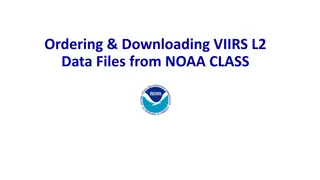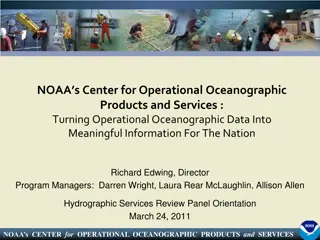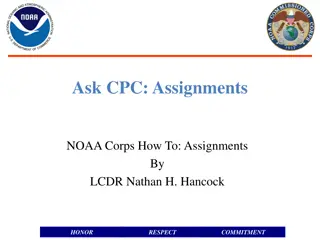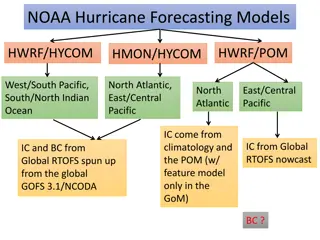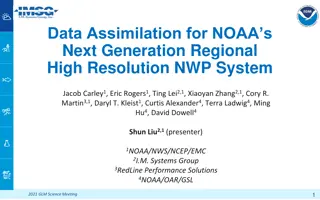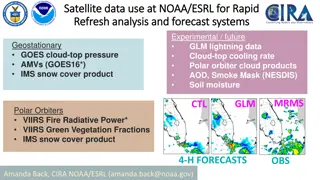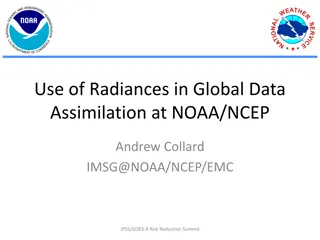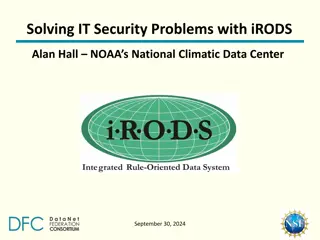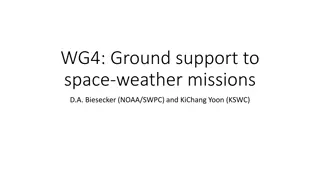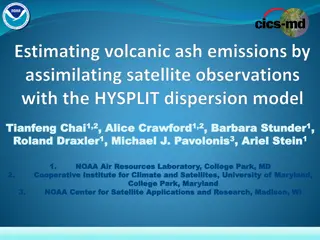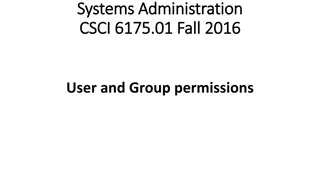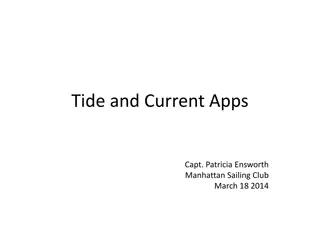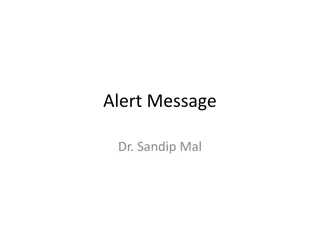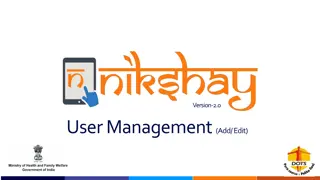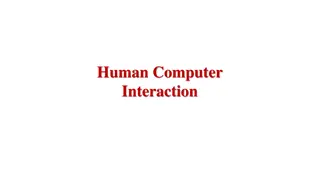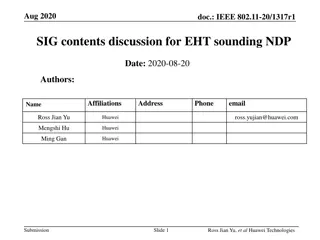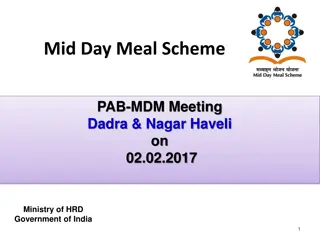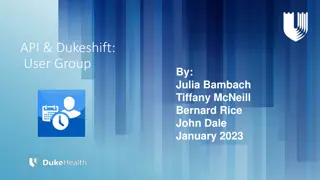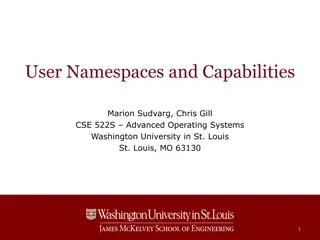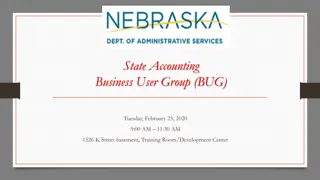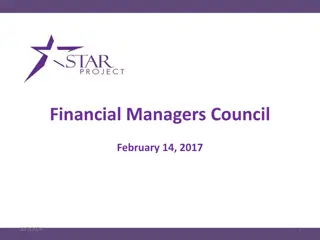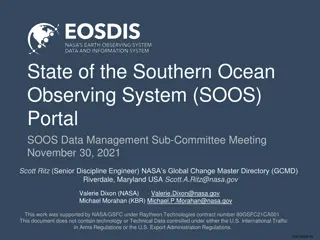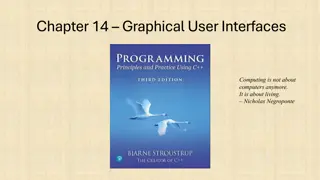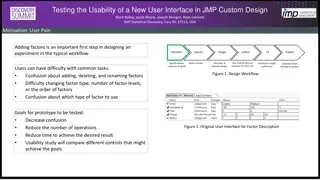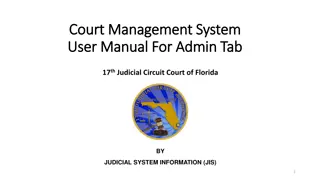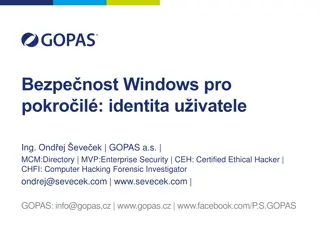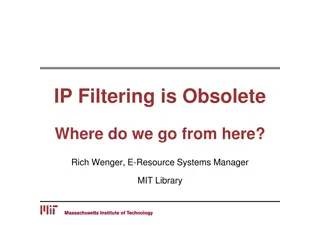NOAA HRD User Group
Kelvin Brentzel provides updates on NOAA HRD User Group activities, including post-launch updates for NOAA-21 HRD and pre-launch updates for J3 HRD. The DRL team collaborates closely with JPSS teams and commercial partners to enhance HRD signal performance and data processing capabilities. Detailed information and documents are available for public access. Backup details regarding X-Band HRD Downlink Center configuration are also provided.
Download Presentation

Please find below an Image/Link to download the presentation.
The content on the website is provided AS IS for your information and personal use only. It may not be sold, licensed, or shared on other websites without obtaining consent from the author. Download presentation by click this link. If you encounter any issues during the download, it is possible that the publisher has removed the file from their server.
E N D
Presentation Transcript
NOAA HRD User Group DRL Update 5-17-23 Kelvin Brentzel
DRLs NOAA-21 HRD Post-Launch Update DRL delivered 3mos before launch all user-required information and software necessary to acquire this new HRD signal and produce mission-specified-formatted L0 products and quicklook (real-time) is available at: https://directreadout.sci.gsfc.nasa.gov/?id=software DRL is working closely with the broader user community to address their needs in collaboration/corroboration with the commercial system providers and integrators. Mission-sanctioned documents and data sets are accessible at: https://directreadout.sci.gsfc.nasa.gov/?id=dspContent&cid=273 Since launch DRL Team has been closely measuring and characterizing the characteristics of the new (NG platform) HRD signal, and interfacing with both JPSS Flight and Ground Teams. It is believed that everyone is pleased with this new performance that accommodates more data with more positive margin thank you JPSS Team (flight and ground)! Note: the JPSS-2 HRD Commissioning Report will be provided soon
DRLs J3 HRD Prelaunch Update DRL continues to work closely with JPSS Ground Project System Engineering, GRAVITE, and NOAA/OSPO SMEs DRL is working with both JPSS-3 (J3) Flight and Ground Project-designated SMEs as well as commercial sector to develop representative HRD processor. The team has implemented an HRD preprocessor approach to be located at the spacecraft during I&T, which will serve as an evaluation platform for the future software that will be made available to the public. Additionally, preliminary documents and data sets will be accessible at: https://directreadout.sci.gsfc.nasa.gov/?id=dspContent&cid=273 DRL extends (as always) an open-door policy for commercial access to the Global View Testbed environment for their JPSS-3 readiness, whereby vendors may have technical interchange and optionally evaluate their processing elements on location by utilizing the technical information, data sets and signal processing environment. https://directreadout.sci.gsfc.nasa.gov/?id=global_view_live
Backup: It all works JPSS1 JPSS2 Spacecraft to DBS X-Band HRD Downlink Center Frequency 7812 MHz 7812 MHz Rate 15 Mbps 25 Mbps Assigned Bandwidth (-20 dB) 30 MHz 50 MHz Bit error Rate(BER) 10-8 10-8 PCM Format NRZ-M NRZ-M Convolutional Coding Rate 1/2 length 7. G1 and G2-Invert 15Mbps I + 15 Mbps Q 25Mbps I + 25 Mbps Q Modulation QPSK OQPSK Offset Quadrature Phase Shift Keying Polarization RHCP RHCP Antennas 1 1 prime 1 redundant Block Coding: (255,223) Reed Solomon RS Interleave=4 4 x 32 = 128 Parity Bytes Interleave=5 5 x 32 = 160 Parity Bytes Information Field 4 x 223 = 892 Bytes 5 x 223 = 1115 Bytes Power Level 7,8 Watt 10 Watt (end-of life) higher antenna gain at the edge of coverage provides partial compensation for the increased range loss Antenna pattern 62 degrees nadir coverage See JPSS-1 HRD DBS RF ICD, App B



